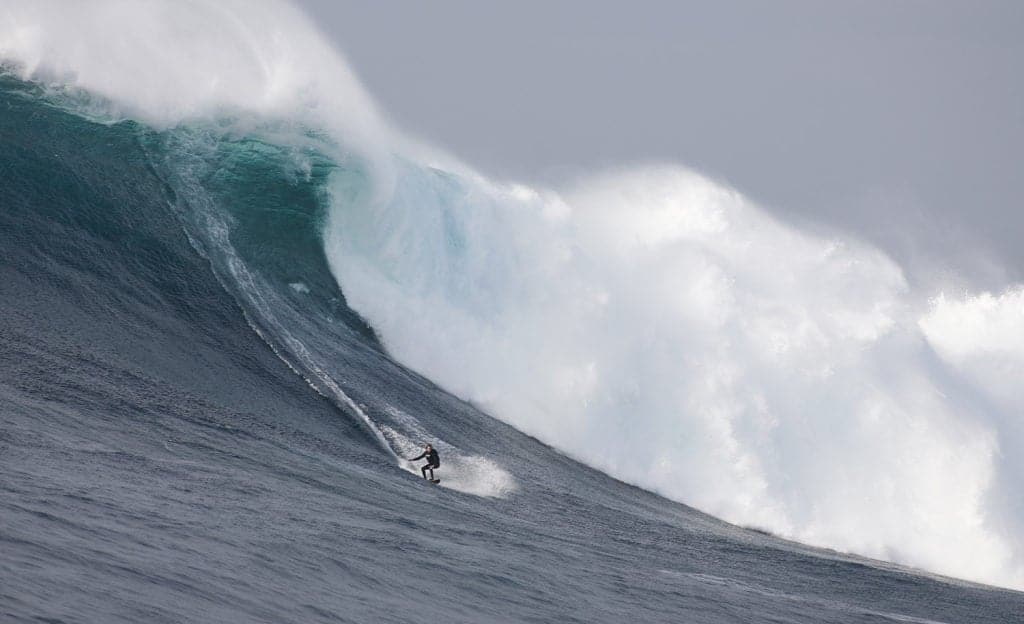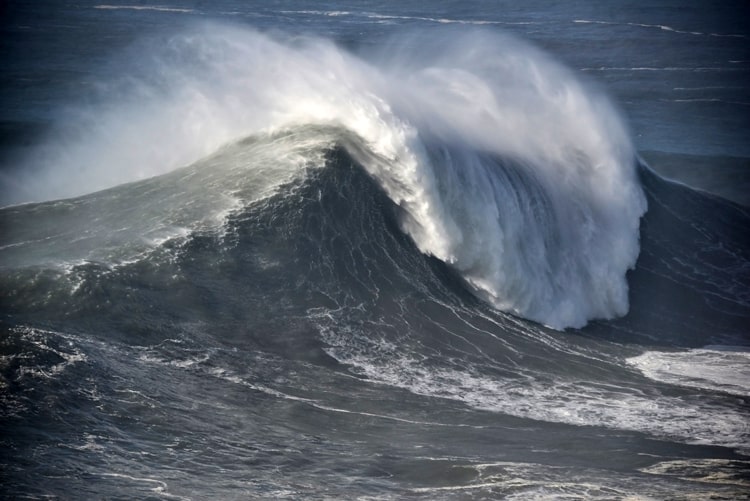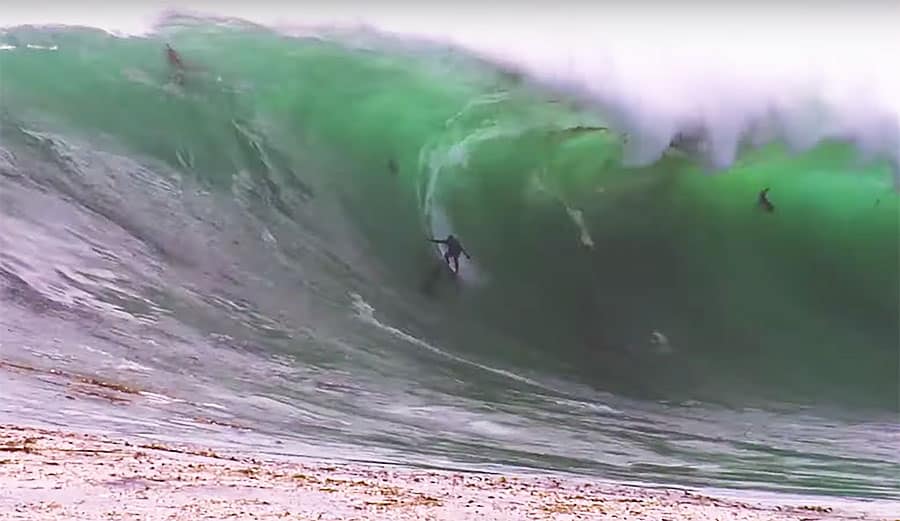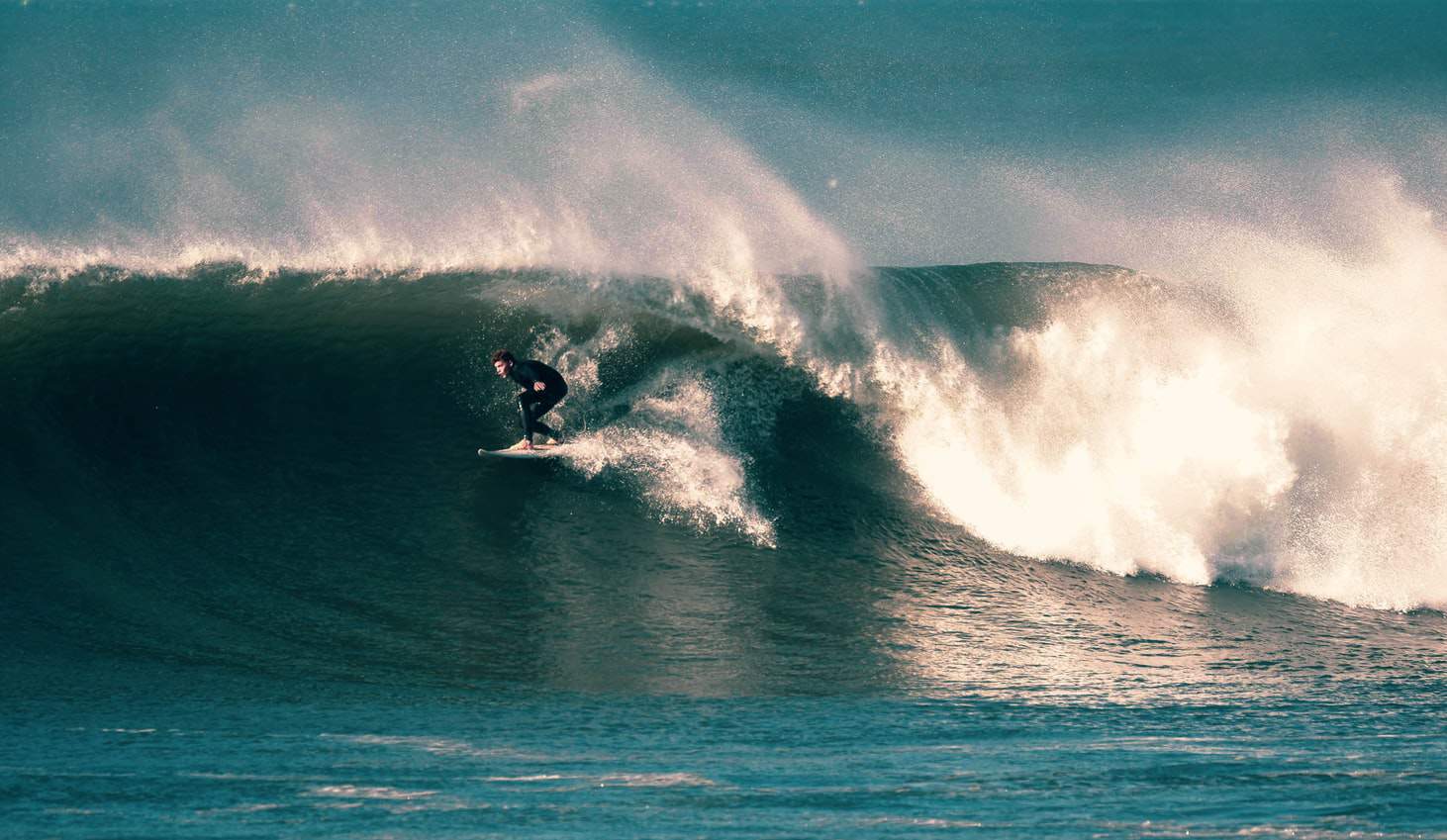For most people, when the waves get big it’s time to get out of the water. For surfers, it’s time to get in.
But even most surfers don’t mess around when the waves start breaking too high. For big wave surfers though, waves hitting several stories are the goal.
These massive waves make big wave surfing only for the most skilled and adventurous riders out there. One of the most dangerous extreme sports there is, it truly attracts a specific athlete. Surfers ride 30 and 50 foot waves, all the way up to records of 80 feet.
While not necessarily an activity for the average surfer, this sport is definitely one to watch. But where in the world do you find these waves and what are they like?
People travel the world over in search of finding massive waves.
The biggest waves in the world are found at Pe’ahi (Jaws), Teahupoo, Mullaghmore Head, Cortes Bank, Nazaré, Mavericks, Waimea Bay, Shipstern Bluff, Ghost Trees and Killers.
These locations are home to some of the largest waves in the world. You can find surfers here year round, but the largest waves occur during the winter. The winter waves are bigger for 2 reasons.
First, during winter, the cold air running over the warm water transfers more wind energy than the reverse. This means the wind is pushing greater energy on the water creating larger swells.
The second and greatest reason is winter storms in the open ocean.
These storms create massive wind energy and disruption to the water. That disruption pushes the energy rippling all the way to shore.
Then in places with giant waves, there tends to be a shelf, reef or rocks that cause these waves to break at even greater heights than normal.
If you’re looking to check out big wave surfing, these 10 places have the best and biggest waves in the world.
Pe’ahi (Jaws)

Pe’ahi is an area on the north shore of Maui, known for its big wave surfing break of the same name. Also known as Jaws, the waves in this spot can literally swallow you whole.
With waves recorded up to 60 feet this is Maui’s largest surf break.
Attracting ambitious surfers and tourists alike, it’s accessible only by dirt road. You’ll either need 4 wheel drive or good walking shoes to check out the waves at Pe’ahi.
The best spot to watch is at the top of a cliff above the beach. Year round you’ll find the lineup at Pe’ahi packed with tow in and traditional paddle surfers alike.
Teahupo’o
While not necessarily topping the highest waves on the list, Teahupo’o is renowned in the big wave surfing world.
Home to the annual Billabong Pro Tahiti surf competition, this spot is touted as one of the most dangerous waves in the world claiming the lives of 5 surfers.
The huge waves here are created by swells that transition from very deep water to very shallow water quickly. The waves then rush over a very shallow coral reef, spelling injury in the event of a wipeout but also creating some of the most unique waves there are.
Still, surfers and spectators from all over the world come to check out this break and it tops the list for almost every die hard big wave surfer out there.
Cortes Bank

Cortes Bank is a seamount off the Southern California coast.
Located a little over 100 miles west of San Diego, it’s considered the outermost point of the California Channel Islands.
One of the most interesting spots on this list, Cortes Bank is entirely in the ocean. Due to rising sea levels after the Ice Age, this break is created by a submerged island, the peak of which is only 3-6 feet underwater.
Forward moving energy from the deep sea merges with the island, capturing swells before they slow down at the coast. Then the shape of the island bends more wave energy in, creating some of the biggest swells around.
The first person to attempt riding these waves was Harrison Ealy in 1961. Accessible only by boat, Cortes Bank is truly a unique surfing destination, quoted as “something out of Waterworld”.
Mullaghmore Head
Mullaghmore Head is a small fishing village on the Northwest coast of Ireland and the location of one of the biggest surf breaks in the world.
While you may not think of Ireland as a major surfing destination, waves here start around 10 feet and grow upwards of 50 feet, making them some of the biggest in the Atlantic.
Mullaghmore has been growing in popularity since 2011 when Billabong hosted the first Big Wave competition of Ireland here. Bringing new surfers from around the world to see what it has to offer, it has created a tight local community of surfers.
In addition to the perils of massive waves, surfers here must watch out for rocks and strong currents making it a break for only those most advanced surfers.
Nazaré

Nazaré is a municipality in the Oeste region of Portugal. Home to one of the most legendary big breaks, it’s also the site of the Biggest wave ever ridden. In 2018, surfer Rodrigo Koxa broke the record by riding a wave 80 feet tall.
The waves here are created by a huge underwater canyon that ends just before the shoreline. Known not only for it’s heights, the waves here are also unusually consistent.
Nazaré’s claim to fame is relatively new, starting with surfer Garrett MacNamara. McNamara came to Nazaré in 2010 where he held the previous record for biggest wave at 78 feet.
Now, along with many surfing competitions, like the renowned Nazaré Tow Surfing Challenge, the village hosts as many as 20 surfers each week throughout the winter. All of them vying for these waves.
Mavericks

Mavericks surf break is located in Half Moon Bay, California just 20 miles south of San Francisco. Known as one of the deadliest waves, this area in the Pacific Ocean is shark infested (even some Great Whites) cloudy and rocky, making it a feat for even the best of surfers.
Waves here tend to top out around 60 feet and are formed by the underwater rock reef of the break.
This spot gained popularity in the 80’s and 90’s when local surfers began tackling these huge waves. Most notably was Jeff Clark, known as the first documented person to ride Mavericks.
Previously, Hawaii was known as the main big wave destination and California wasn’t even on the radar. Today the break is home to The Mavericks Surf Awards, a video contribution competition.
Waimea

Located off the North Shore of O’ahu, Waimea Bay is part of the pioneering of big wave surfing where in 1957 local surfers first took on these swells.
With wave faces reaching up to 60 feet it’s no wonder this legendary spot is a destination for die hard big wave surfers.
However, big breaks here only happen several times a year. This creates a challenge for the Quicksilver Big Wave Invitational held here since waves must reach at least 20 feet in order to hold the competition.
When the conditions are right, spectators and surfers alike flock to Waimea for some once in a lifetime waves.
Shipstern Bluff
Shipstern Bluff, also known as Devil’s Point, is a famous big wave destination on the southeast coast of Tasmania in Australia. As it’s nickname implies, Shipstern Bluff is not for the meek.
The shape of the underlying reef can create a wave within a wave. This causes surfers to handle jumps while riding this fast breaking wave, making it one of the most dangerous in the world.
Accessible only by hike or boat, this is also one of the most secluded surfing spots around.
Ghost Trees

Ghost Trees is a surf spot located in Pebble Beach in Northern California. This cold water surfing destination is home to sharks as well as seriously dangerous waves.
In 2007 surfer Peter Davi died while surfing this spot leading to a ban on jet skis in the area. Since then, the break has seen a decline in popularity but still brings big wave surfers crazy enough to fare its rocky waters.
Killers (Todos Santos)

Not to be confused with the town of the same name, Killers is a surf spot in the Todos Santos Islands of Baja California in Mexico. Here an underwater canyon is responsible for 50 foot waves.
This is the spot for surfers looking to find big waves without the crowds. To reach it, riders must take a boat ride out to the beach.
While it tends to take a back seat to other North American big wave spots, Killers is not one to miss.
Related Questions
Is Big Wave Surfing dangerous?
Big wave surfing requires a huge amount of knowledge and skill. Even with these, it is dangerous for even the most advanced surfers.
Riding 30-80 foot waves is like sliding down an avalanche and runs serious risk in the event of a wipeout. These waves can push a fallen rider 20-50 feet below the surface of the water, who then must rise to the surface before the next wave hits.
While simply hitting the water while riding these waves can be dangerous, strong currents send surfers over the rocks and reefs posing another threat.
All in all, big wave surfing is a dangerous sport that should be practiced with care and knowledge.
What is Tow In Surfing?
Tow in surfing is a technique of catching a wave used by big wave surfers. The method uses a jet ski or helicopter to literally tow a surfer up to the wave to drop in.
Developed in the 90s this technique has allowed surfers to break through the limitations of paddling to catch huge waves over 30 feet high.
While controversial among surfing purists, it’s quite a common method in big wave surfing.

